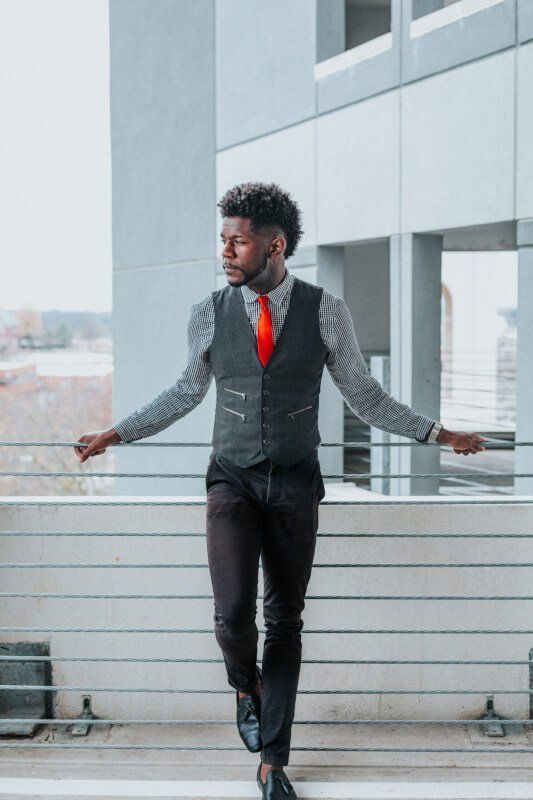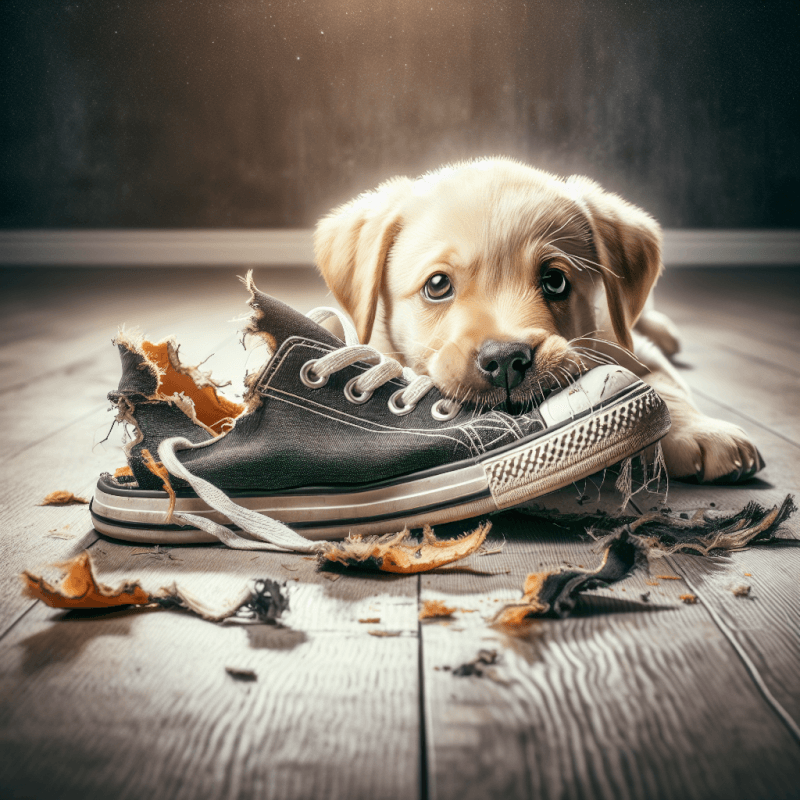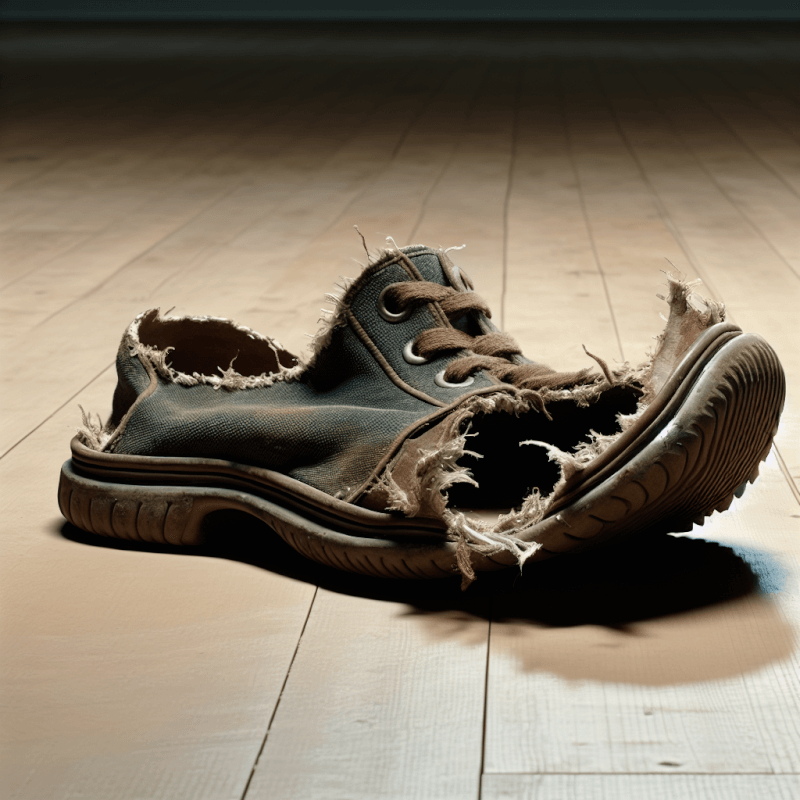If you’ve recently welcomed a playful and adorable puppy into your home, you may be encountering some challenges with their aggressive behavior. Don’t worry! This article will guide you through effective puppy training techniques to address and curb any aggressive tendencies your furry friend may be displaying. With patience, consistency, and positive reinforcement, you’ll soon witness your puppy’s behavior transform into a calm and well-mannered companion. Let’s dive into the world of puppy training and tackle aggressive behavior head-on!

Understanding Aggressive Behavior in Puppies
Puppies are adorable and often bring immense joy to our lives. However, like human babies, they also go through various stages of development, including an aggressive behavior phase. It is important to understand that aggression in puppies is a normal part of their learning process and should not be overlooked or dismissed. By understanding the different types of aggressive behavior, their causes, and recognizing the signs, you can address these issues effectively and ensure a happy and well-adjusted puppy.
Ready for Cat Trivia?
Test your knowledge about cats!

Types of Aggressive Behavior
Aggressive behavior in puppies can manifest in several ways. It is crucial to be able to identify these behaviors in order to address them appropriately. Some common types of aggression in puppies include:
Fear Aggression: This type of aggression occurs when a puppy perceives a threat or is afraid of something. They may growl, bark, lunge, or even bite in an attempt to protect themselves.
Resource Guarding: Resource guarding refers to a puppy becoming possessive and defensive over their food, toys, or other valuable objects. They may growl, bark, snarl, or even bite if someone attempts to approach or take away the guarded item.
Dominance Aggression: Dominance aggression is seen when a puppy attempts to assert their dominance over people or other animals. This can be displayed through growling, snarling, snapping, or even biting.
Play Aggression: Play aggression can occur during playtime when a puppy becomes too rough or mouthy. They may bite or nip while playing, often unintentionally causing harm or discomfort.
Causes of Aggressive Behavior
Aggression in puppies can have various underlying causes. It is essential to address these causes in order to effectively manage and prevent aggressive behavior. Some common causes of aggression in puppies include:
Lack of Socialization: Proper socialization is crucial for puppies to learn appropriate behavior and interact positively with people and animals. Insufficient socialization can lead to fear and anxiety, which may manifest as aggression.
Fear and Anxiety: Puppies may become aggressive when they are afraid or anxious about certain situations, such as meeting new people or being in unfamiliar environments.
Lack of Training and Structure: Puppies need consistent rules and boundaries to understand what is expected of them. Without proper training and structure, they may become confused or frustrated, leading to aggressive behaviors.
Previous Trauma: Puppies who have experienced previous trauma, such as abuse or neglect, may develop aggressive behavior as a defense mechanism. These puppies require extra care, patience, and professional help to overcome their trauma.
Recognizing Signs of Aggression
Recognizing the signs of aggression in puppies is essential to address the issue promptly and prevent any potential harm. Some common signs of aggression in puppies include:
Body Stiffening: When a puppy is aggressive, their body may become stiff, and their muscles tense up. They may hold their tail rigid and have a forward-leaning posture.
Growling and Snarling: Growling and snarling are clear signs of aggression in puppies. This vocalization is their way of warning others to stay away.
Biting or Nipping: Aggressive puppies may resort to biting or nipping as a means to establish control or defend themselves. This behavior can cause pain or injury if not addressed promptly.
Raised Hackles: The fur along a puppy’s back and neck may stand up when they are feeling threatened or aggressive. This is known as raised hackles and is a clear visual cue of aggression.
Recognizing these signs is crucial in order to address aggression effectively and ensure the safety and well-being of both your puppy and those around them.
Preventing Aggression through Proper Socialization
Importance of Socializing Puppies
Proper socialization plays a crucial role in preventing aggression in puppies. It helps them develop positive associations with different people, animals, and environments, reducing the likelihood of fear-based aggression. Socialization also teaches puppies appropriate ways to interact and communicate, enhancing their overall behavior and temperament.
Socialization Techniques
To socialize your puppy effectively, expose them to a wide variety of experiences, people, and animals in a controlled and positive manner. Here are some socialization techniques to consider:
Puppy Classes: Enroll your puppy in puppy classes to provide them with opportunities to interact with other puppies and learn important social skills.
Playdates: Arrange playdates with well-behaved and vaccinated puppies or friendly adult dogs. Supervise and ensure the interactions are positive and safe for all involved.
Meeting New People: Introduce your puppy to different people of various ages, genders, and ethnicities. Encourage them to approach and interact with your puppy gently and positively.
Handling Exercises: Get your puppy accustomed to being handled by gently touching their paws, ears, and mouth. This will help them become comfortable with vet visits and grooming sessions.
Exposing Puppies to Different Environments
In addition to socializing with people and animals, it is important to expose your puppy to different environments and stimuli. Take them for walks in busy streets, parks, or areas with different sounds and smells. Gradually increase the level of exposure, ensuring your puppy feels safe and comfortable. This exposure will help prevent fear-based aggression and help your puppy become more adaptable and confident in different situations.
Creating a Positive Training Environment
Using Positive Reinforcement
Positive reinforcement is a highly effective training method for puppies, including those displaying aggressive behavior. This method involves rewarding desired behaviors with treats, praise, or play, while ignoring or redirecting unwanted behaviors. By focusing on rewarding good behavior, puppies learn to associate positive actions with positive outcomes, reinforcing those behaviors in the long run.
Establishing Consistent Rules
Consistency is key when it comes to training aggressive puppies. Establish clear rules and boundaries for your puppy and ensure that everyone in the household follows them consistently. Inconsistency can confuse puppies and potentially contribute to their aggressive behavior. Consistent rules provide structure and guidance, making it easier for your puppy to understand what is expected of them.
Providing Mental and Physical Stimulation
Aggressive behavior in puppies can sometimes be a result of pent-up energy or boredom. Providing both mental and physical stimulation is vital to prevent and manage aggressive behavior. Engage your puppy in activities that challenge their mind and body, such as puzzle toys, interactive games, and regular exercise. This helps channel their energy in a positive and constructive way, reducing the likelihood of aggressive behavior.
Teaching Basic Obedience Commands
Command Training for Aggressive Puppies
Training aggressive puppies can be challenging, but teaching them basic obedience commands is a crucial step towards managing their behavior. Obedience training helps establish boundaries, improve communication, and foster a stronger bond between you and your puppy.
Teaching Sit, Stay, and Leave It
Start with simple commands like “sit,” “stay,” and “leave it.” Teach your puppy these commands using positive reinforcement techniques. Reward your puppy with treats and praise when they respond correctly. Consistent training sessions and practice in different environments will reinforce these commands and help your puppy understand and respond appropriately.
Using Reward-Based Training Methods
Reward-based training methods are particularly effective for puppies displaying aggressive behavior. Instead of punishing or scolding your puppy, focus on rewarding them for positive behaviors. This positive reinforcement helps create a positive association with desired behaviors and encourages your puppy to repeat them. Use treats, praise, and play as rewards to reinforce good behavior and discourage aggression.

Addressing Specific Types of Aggressive Behavior
Food Aggression
Food aggression in puppies typically occurs when they become possessive over their food. To address this behavior:
Feed your puppy in a calm and controlled environment to reduce the potential for aggression.
Gradually desensitize your puppy to people approaching their food by rewarding them with treats when someone comes near their food bowl.
Practice ‘trading up’ by offering your puppy an even better treat or toy in exchange for giving up their food.
Toy or Resource Guarding
Puppies exhibiting toy or resource guarding behavior can be trained to overcome this aggression. Here are some tips:
Teach your puppy the “drop it” or “leave it” command to encourage them to release toys or objects when asked.
Use positive reinforcement to reward your puppy for willingly sharing their toys or resources, even if it means a brief interruption of play.
Gradually reintroduce toys and objects while maintaining positive reinforcement, so your puppy associates them with positive experiences rather than aggression.
Fear or Defensive Aggression
Fear or defensive aggression in puppies stems from a lack of confidence or fear of certain stimuli. To address this behavior:
Avoid exposing your puppy to situations that trigger fear or anxiety until they have had sufficient socialization and have built confidence.
Gradual exposure to fear-inducing stimuli, in a controlled and positive manner, can help desensitize your puppy and reduce their aggressive response.
Seek the assistance of a professional dog trainer or behaviorist who can guide you through desensitization and counterconditioning techniques.
Dealing with Puppy Biting and Mouthing
Understanding Natural Puppy Behavior
It is important to understand that biting and mouthing are normal behaviors for puppies. They use their mouths to explore their environment, play, and learn bite inhibition. However, it is vital to train them to control the force of their bites and redirect their mouthing to appropriate items.
Redirecting Biting onto Appropriate Items
To redirect your puppy’s biting onto appropriate items, follow these steps:
Whenever your puppy bites or mouths you, immediately redirect their attention to a chew toy or suitable chew item.
Offer praise or treats when your puppy gnaws on the appropriate item, reinforcing the desired behavior.
Consistently provide appropriate chew items and redirect their attention whenever they begin to bite or mouth on inappropriate objects.
Teaching Bite Inhibition
Bite inhibition is crucial for puppies to learn in order to control the force of their bites. Here’s how to teach it:
When your puppy bites too hard during play, let out a high-pitched yelp or abruptly stop playing.
This mimics how puppies communicate with each other and teaches your puppy that rough play results in the end of fun.
Resume play gently after a brief pause. Repeat this process consistently to help your puppy learn appropriate biting pressure.

Handling Aggressive Behavior Towards Humans
Seeking Professional Help
When dealing with aggression towards humans, it is crucial to seek professional help from a qualified dog trainer or behaviorist. They can assess the underlying causes of the aggression and develop a customized behavior modification plan for your puppy.
Training Techniques for Human-Directed Aggression
Professional trainers can employ various techniques to address aggression towards humans, such as:
Counterconditioning: This technique involves changing your puppy’s fearful or aggressive response by gradually exposing them to the trigger while associating it with positive experiences.
Desensitization: A method aimed at gradually exposing your puppy to the trigger in a controlled and positive manner, helping them become less reactive over time.
Behavior Adjustment Training (BAT): This technique involves using functional rewards and controlled environments to create positive associations with the trigger and encourage appropriate behavior.
Establishing Trust and Respect
Building trust and respect with an aggressive puppy is crucial. Focus on creating a safe and secure environment, providing consistent structure and positive reinforcement, and avoiding actions that may further trigger their aggression. Patience, consistency, and professional guidance will help you establish a trusting relationship with your puppy and address their aggressive behavior effectively.
Managing Aggression Towards Other Animals
Introducing Puppies to Other Pets
When introducing a puppy to other pets, it is important to do it gradually and under controlled circumstances. Follow these steps for a successful introduction:
Start by allowing the pets to sniff each other’s scents through a closed door or gate, gradually progressing to visual contact.
Select a neutral territory for the introduction and supervise the initial interactions closely.
Gradually increase the duration and frequency of these interactions, ensuring that all pets remain calm and comfortable.
Properly Supervising Interactions
Supervision is crucial when allowing your puppy to interact with other animals. Watch for any signs of tension or discomfort, and intervene if necessary. Ensure that all interactions are positive and end them before any aggressive behavior escalates. Consistency and positive reinforcement are key in teaching your puppy appropriate behavior towards other animals.
Gradually Desensitizing and Counterconditioning
If your puppy displays aggression towards other animals, consider professional help to guide you through the desensitization and counterconditioning process. This involves gradually exposing your puppy to the trigger in a controlled manner while associating positive experiences with the presence of other animals. This method can help your puppy overcome their aggression and learn to coexist peacefully with other animals.

Addressing Aggression in Puppies with Previous Trauma
Understanding the Effects of Trauma
Puppies who have experienced previous trauma may display aggressive behavior as a result of their past experiences. It is important to understand that their aggression stems from fear and anxiety, and they require special care and patience.
Creating a Safe and Secure Environment
To help a puppy with previous trauma, create a safe and secure environment by:
Establishing a consistent routine and providing them with a dedicated space where they feel safe and can retreat when anxious.
Avoiding situations or triggers that may remind them of their traumatic experiences and cause heightened aggression.
Providing positive experiences and rewarding calm behavior to build their confidence and reduce fear.
Patience and Slow Rehabilitation Process
Rehabilitating a puppy with previous trauma takes time, patience, and professional help. Proceed slowly and gradually expose them to new experiences or triggers under controlled and positive circumstances. Seek guidance from an experienced behaviorist who can develop a customized rehabilitation plan to address the specific needs of your puppy.
Seeking Professional Help for Persistent Aggressive Behavior
When to Consult a Professional Trainer
If your puppy continues to exhibit persistent aggressive behavior despite your efforts, it is important to consult a professional dog trainer or behaviorist. They can assess the situation, identify any underlying issues, and develop an effective behavior modification plan to address the aggression.
Finding a Qualified Dog Behaviorist
When seeking professional help for persistent aggression, look for qualified and certified dog behaviorists who have the knowledge and expertise to work with aggressive puppies. Ask for recommendations from your veterinarian or trusted dog training associations to ensure you find a reputable and experienced professional.
Potential Behavior Modification Techniques
A qualified dog behaviorist may employ various behavior modification techniques to address persistent aggression. These techniques may include desensitization, counterconditioning, management strategies, and teaching alternative coping mechanisms. Each approach will be tailored to your puppy’s specific needs and aimed at reducing and managing their aggressive behavior.
By following the steps outlined in this comprehensive article, you can better understand and manage aggressive behavior in puppies. Remember, consistency, positive reinforcement, socialization, and professional guidance play crucial roles in helping your puppy grow into a well-adjusted and well-behaved adult dog. With time, patience, and the right approach, you can successfully address and overcome aggression in your beloved puppy.



